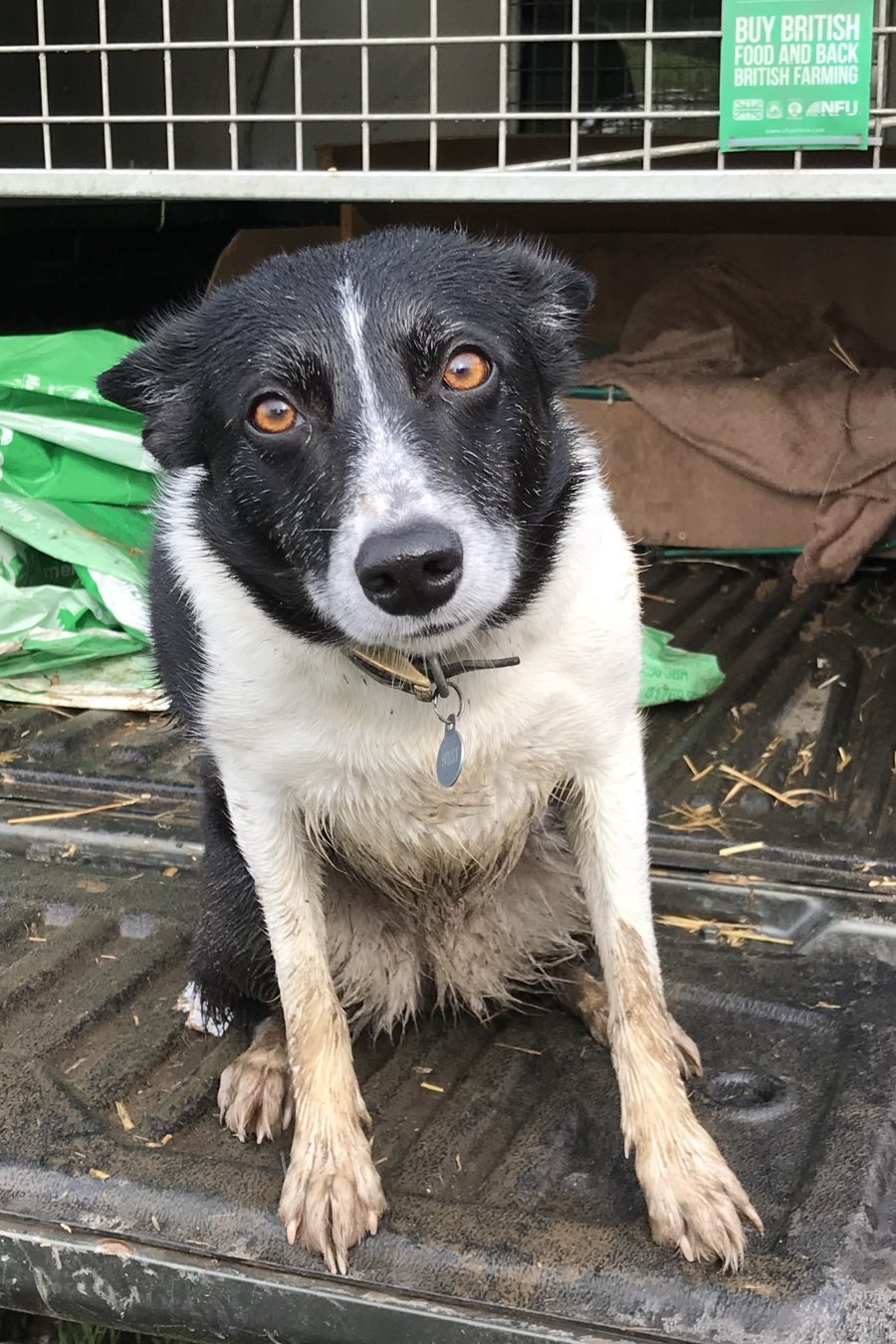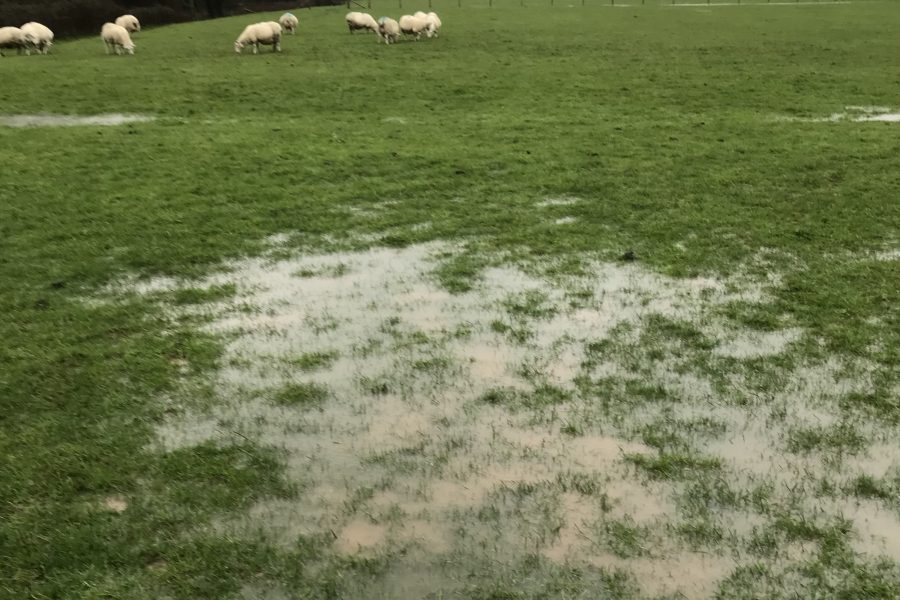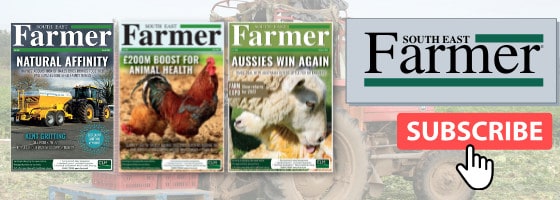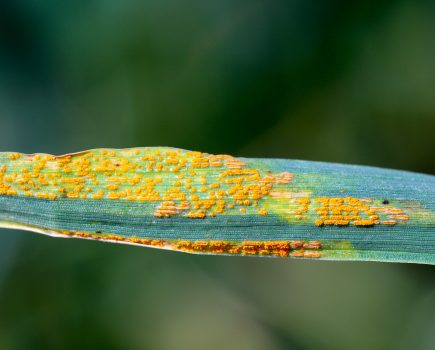I suspect that many entered the New Year with hopes for a change in fortunes in the sheep world. Unfortunately, the weather for the first week of January rather dampened the enthusiasm. Come the first weekend of the month we were paddling in mud, with some paddocks having large areas of standing water that we have not seen for a number of years.
We’ve had worse in the past and managed, but it really was not a good way to start the year and certainly helped to level expectations. There is grass in front of the sheep, although not an abundance, but quality is somewhat questionable; molasses blocks help to boost rumen energy levels, which may keep the rumen biome happy but does not seem to have the same impact on the sheep that it services. Sheep certainly have the capacity to let you know when they are not happy; on some of the cold, windy and wet mornings they just looked utterly miserable, so much so that we resorted to putting a bit of hay out for some of the ewes. Not that they needed it, but I’m sure they appreciated the bit of extra dry matter.
It’s those sorts of days when one thinks, probably being somewhat anthropomorphic, that it would be nice to be able to house the ewes. It would make life so much easier, although I’m not sure that the sheep would totally appreciate it, particularly as our sheep have never been housed, apart that is, from a couple of days in a pen each year as they are drifted out of the lambing paddock for mothering up and routine treatments; even then they always seem, after 24 hours or so, to favour getting back out to grass in preference to the relative warmth and comfort of a mothering pen. Fortunately for us all, sheep (many breeds, anyway) really are a lot tougher and hardier than they appear and most people imagine.
On the plus side, all the predictions for the sheep sector in the year in front of us seem to be positive, in spite of the concerns and upheavals within the sector generated by government policy at the end of 2024. Although, to be fair, that same policy has in part contributed to this positivity. Some of the challenges faced by many hill farmers, where reductions in subsidy payments have encouraged them to divert land to alternative uses, have driven cutbacks in stocking rates and sheep numbers, with consequential impacts on supply – and supply is king when it comes to sheep market prices.
A continued steady decline in the national flock, marginally tighter supplies from the antipodes and a reduction in the EU sheep flock have all contributed to a lessening of supply, the principal stimulus for maintaining firm prices for both lambs/hoggets and cull ewes and for prospects. Those who are doing the job right should see a positive margin this year. We could always do with a bit more, but we do need to be aware of what the consumer market will stand; as ever it is price at the retail end that is the key driver of demand, on the subject of which we simply cannot ignore the contribution to demand made by the halal market, which, once exports are added into the equation, accounts for about 30% of lamb sales. It’s a market that we cannot ignore, however much some producers would like to; it is a huge segment of our market that really does strengthen and support sheep meat prices.
The prospects of a sensible margin does not, however, leave room for complacency. Opportunities for improving margins still exist. It’s rather too easy to do what we have always done; the familiar is rather more comfortable than the unknown, but the simple expedient of standing back and taking a critical and detached view of what we do will often flag up areas for improvement, possibly only small gains but every little helps. As an industry we are still rather too focused on the output per ewe. Considerable resources may be expended trying to gain a percentage or two on lambing performance without a proper consideration of the incremental costs which can frequently exceed additional returns. Output in terms of kg of lamb per hectare can provide a more accurate measure of true efficiency than output per ewe.
The occasional critical appraisal of any sheep enterprise is a good thing, but taking the trouble to step back and look at what you are doing does not mean that changes are inevitable. If the outcome of a truly honest appraisal doesn’t flag up any obvious scope for improvements, why change? And if requirements for some changes are identified, they should be appropriate. For example, it is almost unescapable that last year’s poor performance in the arable sector will impact on of the costs of hard feed this lambing season; a good incentive to cut hard feed and improve performance off grass and forages. But it may not be quite so simple. There is still a need to consider the nutritional requirements of the ewe, particularly as we approach lambing.
Ewes cannot perform off grass that isn’t there; increasing performance off grass and forages necessitates some increase in grass/forage resources, either in terms of area allocated per ewe or by increasing the nutritional output per unit area i.e. through better quality grazing. Simply deciding to reduce costs by cutting back on hard feed without appropriate adjustments on the other side of the equation may generate costly issues around lambing and for subsequent lamb performance. It is important to consider the reasons for providing hard feed. For many it simply supports high levels of ewe output; for others, particularly those on permanent pasture, it may be required to make up for shortcomings in the quality and or quantity of grazing, particularly where this is combined with relatively high levels of stocking, where hard feed may simply be a means of buying in additional hectares when a rather more strategic approach may be required.
While deciding to reduce or remove expensive hard feeds may seem an obvious solution to cutting costs, realistic and informed decision making is essential. As obvious as it may appear, it may not always be the correct or appropriate approach; short term savings may have drastic, long-term cost implications.

For more like this, sign up for the FREE South East Farmer e-newsletter here and receive all the latest farming news, reviews and insight straight to your inbox.







